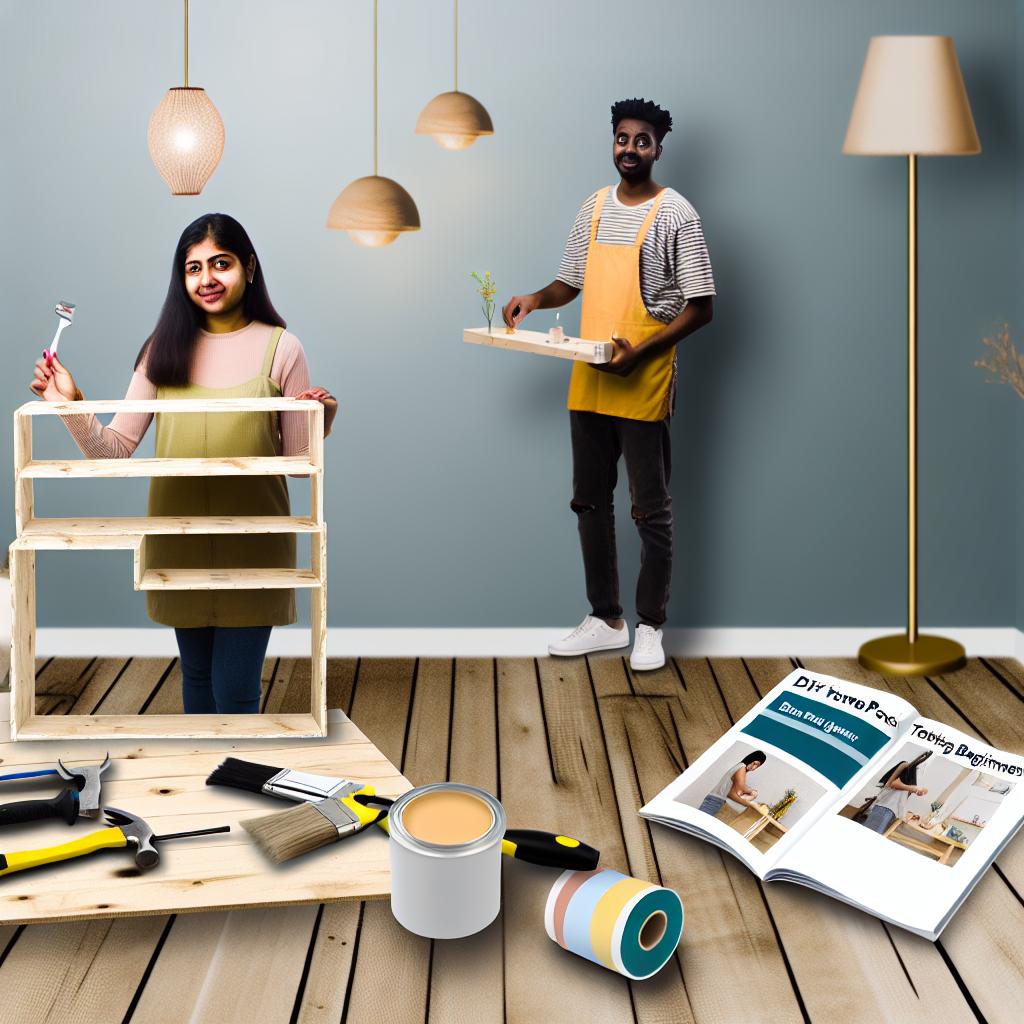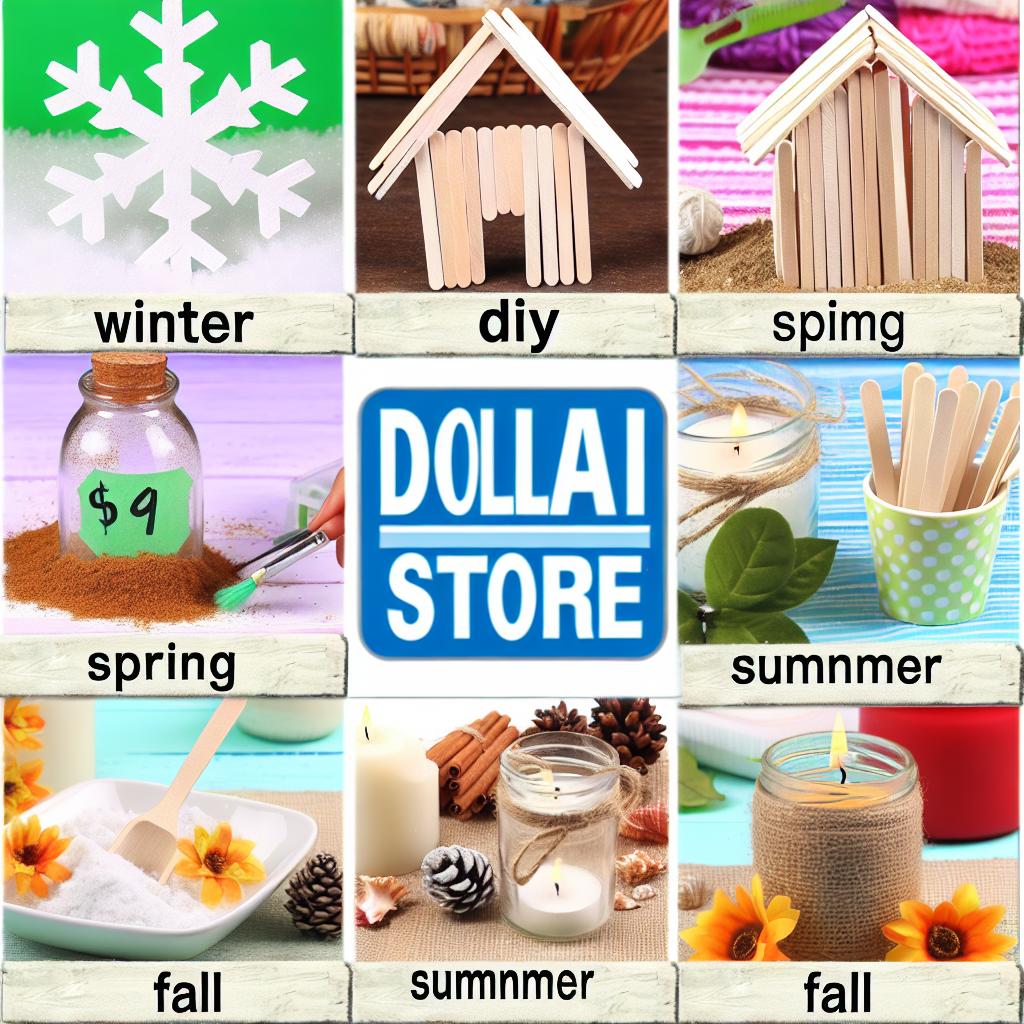DIY Home Projects for Beginners
If you’re new to home DIY projects, you’ve come to the right place. This guide will provide you with a handful of simple, affordable, and easy DIY projects that anyone can tackle. Not only will these projects help enhance the beauty and functionality of your home, but they’ll also give you the satisfaction of creating something with your own two hands.
Tools Needed
Before diving into your first DIY project, it’s essential to have some basic tools on hand. Here’s a list of must-have tools for beginners:
- Hammer: Useful for nailing, assembling furniture, and other tasks.
- Screwdriver Set: Both flathead and Phillips screwdrivers in various sizes are essential.
- Measuring Tape: Accurate measurements are crucial for any project.
- Level: Ensures everything is straight and aligned.
- Utility Knife: For cutting materials like cardboard, carpet, or plastic.
- Drill: Drilling holes and driving screws become significantly easier.
- Sandpaper: Smooths rough surfaces and edges.
- Paintbrushes: Various sizes for different painting tasks.
- Pliers: Useful for gripping, bending, and cutting wires.
- Safety Gear: Goggles, gloves, and a dust mask for protection.
Step-by-Step Guide
Project 1: Floating Shelves
Floating shelves are a perfect way to add storage and display space to your home. Here’s how to create your own:
Materials:
- Wooden boards (length and width based on your preference)
- Brackets
- Screws
- Wall anchors
- Paint or stain
- Sandpaper
Instructions:
- Measure and Cut: Measure the space where you’ll install the shelves and cut the wooden boards to size.
- Sand: Sand the edges and surfaces of the boards to smooth them out.
- Paint or Stain: Apply paint or stain to the boards and let them dry completely.
- Install Brackets: Mark the positions for the brackets on the wall and drill pilot holes. Insert wall anchors if needed.
- Mount Shelves: Attach the brackets to the wall with screws, then place the prepared shelves on the brackets.
Project 2: Customized Planters
Personalized planters can brighten up your home and add a touch of nature. Here’s a straightforward way to make them:
Materials:
- Terracotta pots
- Paints (acrylic or waterproof)
- Paintbrushes
- Stencils (optional)
- Potting soil
- Plants or seeds
Instructions:
- Clean Pots: Ensure the terracotta pots are clean and dry.
- Paint: Use your paints to decorate the pots. You can use stencils for a more detailed design.
- Seal: Once the paint is dry, seal the pots with a waterproof sealer to protect the design.
- Plant: Fill the pots with potting soil and add your plants or seeds.
Project 3: DIY Photo Frame Gallery Wall
Creating a gallery wall with DIY photo frames can personalize and brighten any room. Here’s how to do it:
Materials:
- Assortment of photo frames
- Paint
- Sandpaper
- Measuring tape
- Level
- Hanging hardware
- Photos or artwork
Instructions:
- Paint Frames: Sand the frames lightly and then paint them in your chosen colors. Let them dry completely.
- Plan Layout: Lay out the frames on the floor to plan your gallery wall layout. Experiment with different arrangements until you find one you like.
- Mark Wall: Use a measuring tape and level to mark where each frame will hang on the wall.
- Install Hardware: Attach hanging hardware to the frames and the wall as needed. Ensure everything is level and secure.
- Hang Frames: Place photos or artwork in the frames and hang them on the wall according to your layout plan.
Common Mistakes
Even simple DIY projects can go awry. Here are some common mistakes to avoid:
- Skipping Measurements: Always measure twice before cutting or drilling. This can save time and resources.
- Ignoring Surface Preparation: Sanding and cleaning surfaces before painting or staining ensures better adhesion and a smoother finish.
- Using the Wrong Tools: Using improper tools can lead to poor results and can even cause injury.
- Not Securing Items Properly: Ensure shelves, frames, and other items are securely anchored to avoid accidents.
- Rushing: Taking your time to follow each step carefully can prevent mistakes and ensure high-quality results.
FAQ
Q1: What are the best materials for beginners to work with?
Wood, terracotta, and simple fabrics are great materials for beginners due to their ease of use and versatility.
Q2: How can I ensure a professional finish on my DIY projects?
Proper preparation, such as cleaning and sanding, along with using quality paints and materials, can help achieve a professional finish.
Q3: How do I know if my wall can support floating shelves?
Use a stud finder to ensure you’re anchoring the shelves to wall studs for proper support. For drywall, use appropriate wall anchors and brackets.
Conclusion
Embarking on DIY home projects can be incredibly rewarding, especially for beginners. With a little patience and the right tools, you can transform your living space with simple, affordable projects. Remember to take your time, follow the instructions, and enjoy the process. For more DIY inspiration and guides, check out our other helpful articles like DIY Bathroom Remodel Tips and Creating a Cozy Living Room on a Budget.


